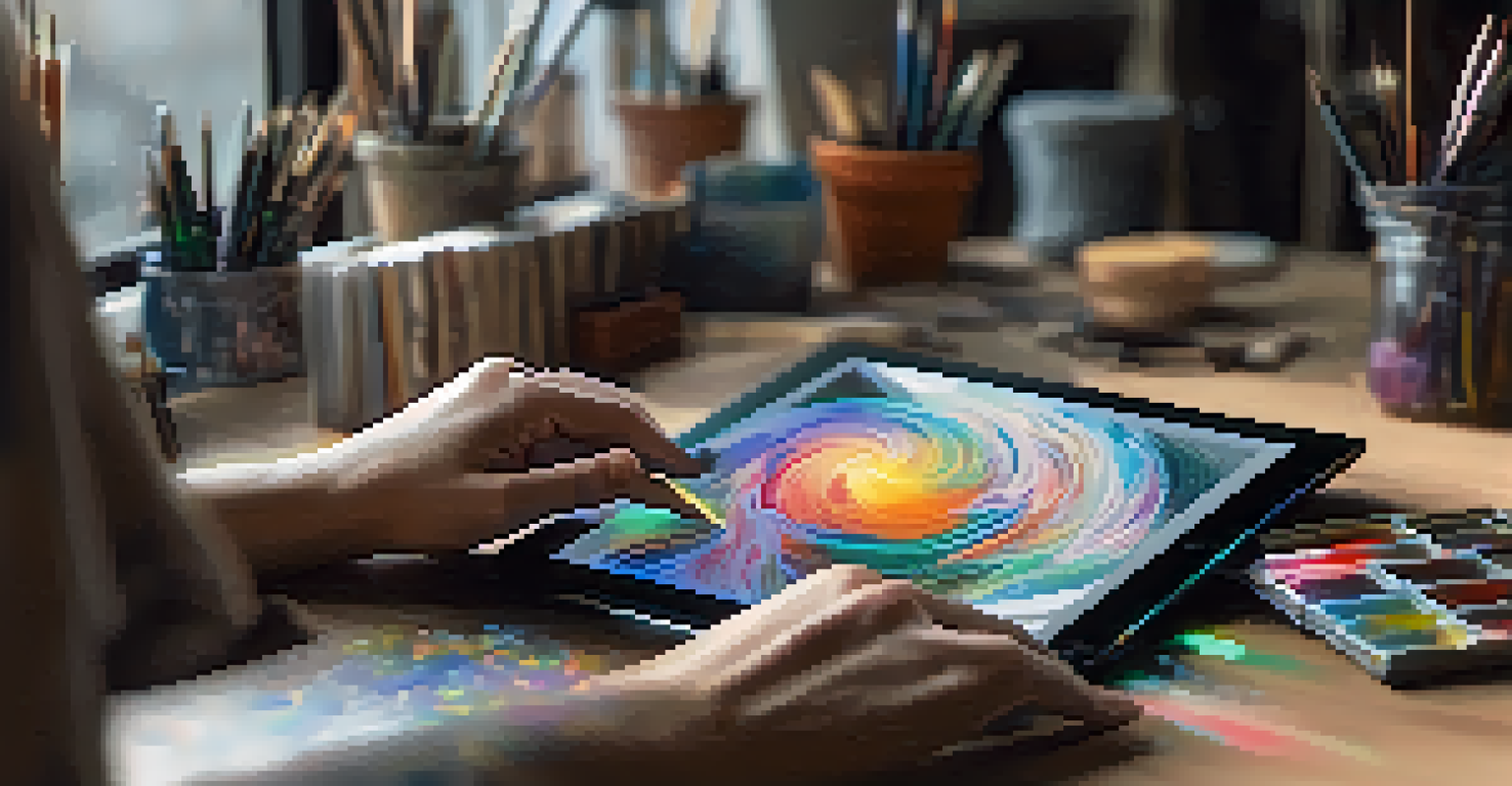The Future of Intellectual Property in a Blockchain World

Understanding Intellectual Property: A Quick Overview
Intellectual Property (IP) refers to creations of the mind, including inventions, literary and artistic works, symbols, names, and images used in commerce. It protects the rights of creators and ensures they can benefit from their own work. In today's digital age, the importance of IP has grown, especially with the rise of online content and the ease of copying and distributing it.
Intellectual property is the oil of the 21st century.
However, traditional IP systems often face challenges like piracy and infringement, making it difficult for creators to enforce their rights. This is where blockchain technology steps in, offering a decentralized solution that can enhance the security and management of IP. By using blockchain, creators can register their works on a tamper-proof ledger, providing proof of ownership and authenticity.
As we explore the future of IP in a blockchain world, it's essential to understand both the benefits and challenges this technology presents. The intersection of IP and blockchain could redefine how we think about ownership, creativity, and commerce in the digital landscape.
How Blockchain Technology Works in IP Management
Blockchain technology is essentially a decentralized digital ledger that records transactions across many computers. This means that once data is entered into the blockchain, it cannot be altered or deleted, ensuring transparency and security. For IP management, this characteristic allows creators to register their works and secure their rights without relying on traditional intermediaries.

With blockchain, each time an IP asset is created or transferred, a new block is added to the chain, capturing all relevant details such as the creator's information and the date of creation. This creates an immutable record that can be accessed by anyone, providing greater transparency in ownership and usage rights. For example, musicians can use blockchain to register their songs, ensuring they receive royalties whenever their music is played.
Blockchain Enhances IP Security
By decentralizing IP records, blockchain provides a tamper-proof solution that protects creators from theft and unauthorized use.
The use of smart contracts—self-executing contracts with the terms directly written into code—further enhances this system. These contracts can automatically enforce IP agreements, streamlining processes like licensing and royalty payments, thus benefiting both creators and consumers.
Benefits of Blockchain for Intellectual Property Owners
One of the most significant benefits of blockchain for IP owners is enhanced security. By decentralizing the storage of IP records, blockchain minimizes the risk of data loss or manipulation. This level of security reassures creators that their works are protected against theft and unauthorized use.
The future belongs to those who believe in the beauty of their dreams.
Additionally, blockchain can lower costs associated with IP management. Traditional methods often involve legal fees, registration costs, and lengthy processes to enforce rights. With blockchain, many of these costs can be reduced or eliminated, making it easier for individual creators and small businesses to protect their IP.
Moreover, blockchain encourages a more equitable distribution of profits. By using smart contracts, creators can ensure they receive fair compensation for their work without the need for intermediaries, which often take a significant cut. This could lead to a more sustainable creative economy where artists and inventors thrive.
Challenges and Limitations of Blockchain in IP
Despite its potential, the integration of blockchain into IP management is not without challenges. One major concern is the legal recognition of blockchain records. While blockchain provides a secure way to prove ownership, not all jurisdictions may fully acknowledge these records as legal proof, leading to potential disputes.
Another limitation is the technological barrier. Many creators, especially those in traditional industries, may lack the technical knowledge or resources to effectively use blockchain technology. This could create a divide where only tech-savvy individuals or organizations can fully benefit from the advantages blockchain offers.
NFTs Transform IP Monetization
Non-Fungible Tokens enable creators to sell their digital assets directly, providing greater control over pricing and ensuring ongoing royalties.
Additionally, the environmental impact of blockchain technology, particularly Proof of Work systems, raises concerns. The energy consumption associated with maintaining blockchain networks can be significant, prompting a need for more sustainable alternatives that do not compromise the integrity of IP protection.
The Role of NFTs in Intellectual Property
Non-Fungible Tokens (NFTs) have gained immense popularity as a way to tokenize digital assets, including art, music, and videos. They provide a unique way for creators to sell and manage their IP, as each NFT is distinct and cannot be replicated. This uniqueness creates scarcity, which can drive up value in the marketplace.
For artists, NFTs offer a direct route to monetize their work without relying on traditional galleries or auction houses. By selling their art as NFTs, creators can connect directly with buyers, retaining more control over the pricing and distribution of their work. Moreover, smart contracts associated with NFTs can ensure that artists receive royalties each time their work is resold.
However, the NFT market is still evolving, and its long-term implications for IP are yet to be fully understood. As more creators adopt NFTs, it will be crucial to establish clear guidelines and regulations to protect both the creators' rights and the buyers' interests in this new digital landscape.
Future Trends in IP and Blockchain Technology
As the digital landscape continues to evolve, we can expect to see more innovations at the intersection of IP and blockchain technology. One trend to watch is the rise of decentralized marketplaces, where creators can sell their work directly to consumers without intermediaries. This could empower artists and inventors, allowing them to keep a larger share of their earnings.
Furthermore, advancements in interoperability between different blockchains may enhance how IP is managed across platforms. This could lead to a more unified approach to IP rights, where creators can easily track and manage their assets across various digital environments. Imagine a world where a single click allows you to see all your IP rights consolidated in one place, no matter where they exist.
Future of IP Requires Collaboration
As blockchain reshapes the IP landscape, collaboration among creators, businesses, and policymakers is essential to address challenges and foster innovation.
Lastly, governments and institutions are likely to adapt their IP laws to accommodate these technological advancements. As blockchain becomes more mainstream, we may see new regulations that recognize blockchain records as legitimate proof of ownership, providing a legal framework that supports creators in this new era.
Conclusion: Embracing the New IP Landscape
The future of intellectual property in a blockchain world holds great promise, but it also presents challenges that must be addressed. As we navigate this evolving landscape, it’s crucial for creators, businesses, and policymakers to collaborate in finding solutions that protect the rights of individuals while fostering innovation.
For creators, embracing blockchain technology can mean greater security and control over their work. By understanding and leveraging these new tools, artists, inventors, and businesses can thrive in a digital marketplace that values their contributions and creativity.

Ultimately, the goal should be to create an IP ecosystem that is fair, transparent, and accessible for all. By doing so, we can ensure that the future of creativity is bright and rewarding for everyone involved.